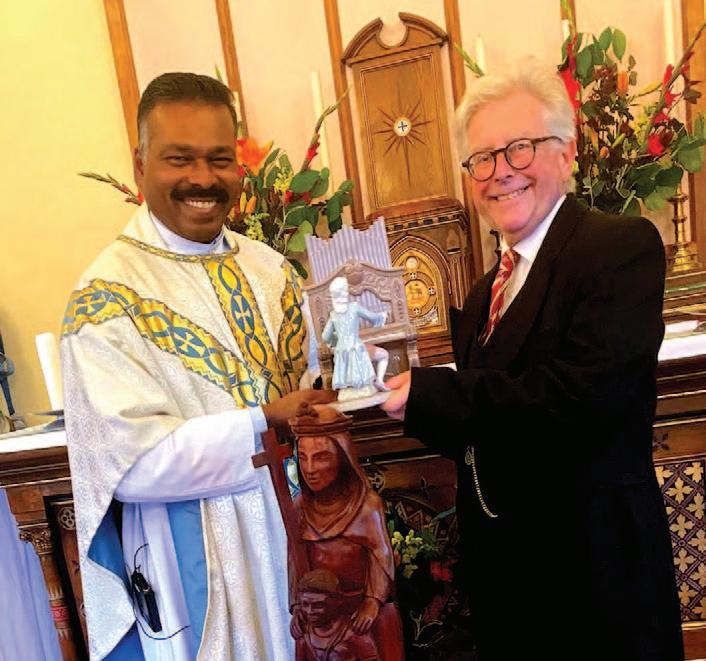Fr Peter is awarded Vatican scholarship
– page 2
– page 6

Fr Peter is awarded Vatican scholarship
– page 2
– page 6

An 85-strong party from the Diocese of East Anglia joined the Catholic Association

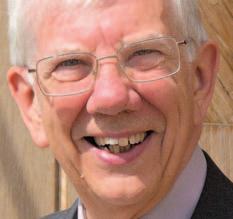
Pilgrimage to Lourdes from Aug 18 to 25 where they received a warm welcome. Pilgrimage director, Deacon Huw Williams, reports.
n After a slightly delayed early morning flight from Stansted Airport, the group arrived in Lourdes for a late-ish lunch and then Mass in the Chapel of St Maximilian Kolbe for the ‘early arrivals’. The opening Mass of the pilgrimage was presided over by our own Bishop Peter Collins, at 4.30pm. In his opening address, Bishop Peter said: “As we reflect on what the command by Our Lady to St Bernadette ‘to build a chapel’ might have meant in 1858, we know now, 165 years later, that it means far more than bricks
page 10
and mortar. It means building up spiritfilled friendships and a vision for a church of the future already given full planning permission.
“I wish you all a happy and holy pilgrimage, and I am sure that each of you will have something different that you can tell me about the spiritual architecture of Lourdes as you have experienced it that will help me to understand the vision of the Immaculate Virgin Mary granted to St Bernadette, and then respond in my own way to her command to ‘build the church’.”
Sunday started with the International Mass presided over by Jozef Cardinal de Kesel in a packed Basilica of St Pius X. Pilgrims from our Catholic Association group read at the Mass and offered general intercession and Bishop Peter led for part of the Eucharistic prayer.
A luncheon was held to thank the East Anglian nursing staff who so ably support our assisted pilgrims in the Hospitalité de Notre Dame de Lourdes. Without their
support, we could not bring our assisted pilgrims without whom the pilgrimage would lose much of its raison d’être.
On the Sunday evening, we were due to attend the procession of the Blessed Sacrament, but in a change, due to the excessive heat, this took place entirely in the underground basilica.
Monday began with Mass for the Catholic Association pilgrims, of whom the East Anglian pilgrims are a part. The grotto is the place where St Bernadette saw Our Lady and under her direction unearthed the spring from which the renowned Lourdes water is drawn – the spring can be seen and its gurgling heard in the sanctuary.
After the Mass, photographs were taken of all of the pilgrims and our own East Anglian group (pictured above).
Later in the afternoon, a penitential liturgy was held in the Rosary Basilica with the opportunity for individuals to receive the Sacrament of Reconciliation. The n Continued on page two.
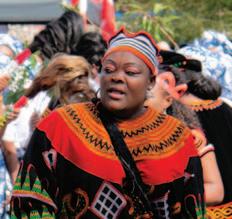
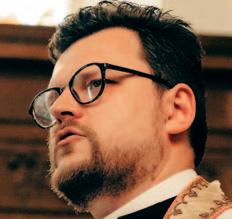
n Caritas East Anglia will stage its firstever Caritas Festival in Cambridge on November 4 at St Laurence’s Church, where there will be stalls and the chance to hear two inspirational people share their stories of involvement in social outreach projects.
n See page 3.
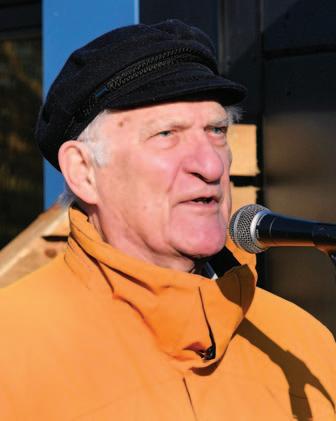
Dowry of Mary brings the world to Walsingham
Fr David talks about his 47 years as a priest
n Chancellor Provost Eugene Harkness and the Parish of Our Lady & The English Martyrs in Cambridge have issued an open invitation to a special liturgical day, organised by The Association for Latin Liturgy.
The event features Mass, a talk by Bishop Emeritus Alan Hopes, and concludes with Vespers and Benediction, all focusing on the role of Latin and active participation in modern Catholic worship.
Provost Harkness extends a warm invitation to all to join him and the Parish in the celebration on Saturday October 7.
The day is being organised by The Association for Latin Liturgy, and it begins with Mass offered by Fr Anton Webb with singing led by Nigel Kerry, Director of Music at OLEM and the Association for Latin Liturgy choir, directed by Fr Guy Nichols.
Following lunch in the hall (please book online at https://latinliturgy.org/meetings), Bishop Emeritus Alan Hopes will speak about “Fully conscious and active participation in the Liturgy.”
The Day concludes with Vespers and Benediction, with singing led by the Association.
The Association believes in “Latin Liturgy and Gregorian Chant for the Church of Today.”

Organiser Paul Henriksen said: “Vatican II is just something in the history books to most Catholics today. Those older people who do remember it tend either to think that the changes it brought in were a good thing or to think that the Mass was fine as it was, and that the changes are the main cause of the big decline in the numbers of people going to Mass each week.
“As usual, though, the answers are not so simple. We are where we are in the history of the Church and of the world, and the ALL believes that the answers are not to be found in going back to how things were before the 1960s.”
n Continued from front page. music group provided reflective music which, with the surroundings, made for an atmosphere that promoted reflection. A thoroughly moving service.
On Tuesday, the East Anglian pilgrims visited Bartrès and celebrated Mass with Bishop Peter in the church where St Bernadette worshipped.
We followed this with a tea party which provided an opportunity for our pilgrims to spend some time together and chat, building community spirit and then returned to our hotels for lunch.
In the evening we took part in the torchlight procession and some of our young people carried the statue of Mary during the procession and our own Bishop Peter presented the intentions to Our Lady and closed the procession with prayer and a blessing.
On Wednesday morning (August 22) our pilgrimage was the first group at the baths where we took part in the water gesture. Since the pandemic, immersion in the baths does not take place and the water gesture seeks to replicate the actions of St Bernadette when she uncovered the spring at the grotto. Once in the baths, you are given time to pray and then the water gesture takes place in three parts with water being poured into your cupped hands on each occasion. Firstly to wash your hands, secondly to wash your face and thirdly to drink.
While we were going through, the Rosary was prayed and music was played by our musicians.
In the late morning, we had the opportunity to walk through the grotto to see the spring and to touch its walls – the very place of the apparitions.
That afternoon the heat was excessive and there was a heat warning in place and so the Way of the Cross was followed in venues in the hotels where it was cool and Mass was celebrated in the church of St Bernadette later in the afternoon. Our visit to the Cité St Pierre, where we had intended to celebrate Mass in the woodland amphitheatre, was called off due to the heat.
And so to our final full day in Lourdes. Once more there was a heat warning in place with temperatures rising above those of the previous day. The programme of events was altered so that everything could be finished before lunchtime. We had the exclusive use of the church of St Bernadette (Grotto side) and a service of the Anointing of the Sick was followed, after a short break, by a celebration of the Mass with the Glanfield Group at which Fr Peter Wygnanski of our diocese preached.
The Catholic Association Pilgrimage xandle and our own East Anglian Pilgrims’ xandle were blessed and taken to the Candle chapels to be lit: this light, as it burns, shows our desire to remain in God’s presence as we go through our daily lives.

Departures began early on Friday morning and despite delays, we had an impromptu singalong and a ‘picnic’ in the departures lounge before finally departing.
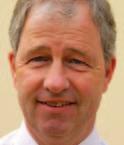
Fr Peter Wygnanski, who is working parttime towards a PhD at the University of Durham, has been awarded a Vatican Research Scholarship from the Ratzinger Foundation.
Catholic
Newspaper of the Diocese of East Anglia
EDITOR: Keith Morris tel: 07712 787762
Pear Tree Farmhouse, Wymondham Road, Wreningham, Norwich, NR16 1AT. keith.morris@rcdea.org.uk
Articles and photographs for the next edition are very welcome and should be sent to the editor, ideally via email. by Monday October 9.
Diocese website: www.rcdea.org.uk
Advertising: Contact Nick at Cathcom on tel 01440 730399 or email him at ads@cathcom.org
Publisher: Cathcom Ltd, 0207 112 6710
Inclusion of adverts is the responsibility of Cathcom and does not imply endorsement by the Diocese of East Anglia.
n Each year, the Vatican's Ratzinger Foundation selects five PhD candidates in Theology, Patristics or Holy Scriptures to receive academic grants. These competitive scholarships, with applications from around the world, are intended to support and promote the study of Pope Benedict's theology, in particular research which demonstrates Pope Benedict's commitment that faith in Jesus Christ is the only true ground for human flourishing, both for the individual and for society.
Fr Peter Wygnanski, who has recently been appointed as Personal Secretary to Bishop Peter Collins, is working to respond to new secular philosophies about our relationship to humanity's long-term future, using the theology of Joseph Ratzinger/Pope Benedict XVI to bring to light the meaning future generations have for us today.
Fr Peter said: “A concern for the wellbeing of humanity's future helps overcome the gap between recognising that we now threaten that well-being through existential threats such as human-caused climate change, the possibility of catastrophic nuclear war or unregulated artificial intelligence development, and doing something about it.
“Secular philosophy has identified that for the first time in history, humanity is now the greatest threat to itself, and the Catholic faith has a potentially enormous role to play in ensuring that the coming centuries are a time when humanity's future flourishing and blessedness are assured rather than squandered.”
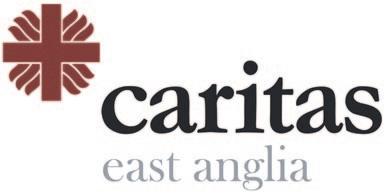
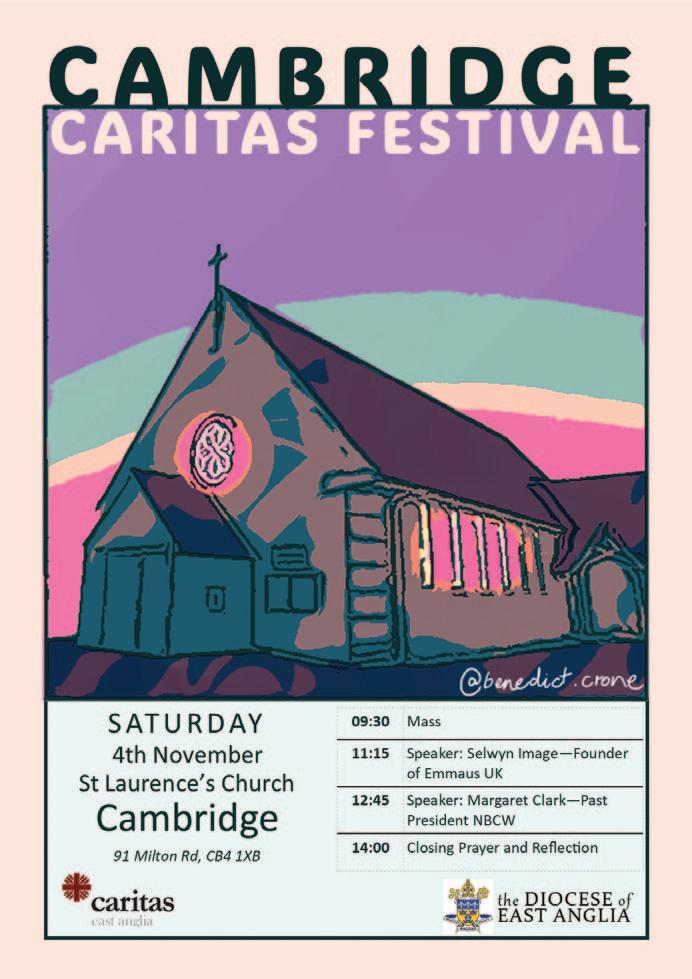
Caritas East Anglia will stage its first-ever Caritas Festival in Cambridge on November 4 at St Laurence’s Church, where there will be stalls and the chance to hear two inspirational people share their stories of involvement in social outreach projects. Jane Crone of CAFOD in East Anglia reports.
n The founder of Christian homelessness charity Emmaus UK, Selwyn Image, is the keynote speaker at 11.15am. While a languages student in Cambridge, Selwyn volunteered for the Emmaus Paris community, which gives shelter, meaningful work and a sense of community to homeless people.
After university, he spent 30 years as an international marketing executive working across the world. In 1989 he returned to live in Cambridge and was struck by the increase in the number of homeless people living on the city’s streets. Inspired to respond he asked Emmaus founder, Abbé Pierre for help, recalling his words to those around him when faced with immediate social need – “Au boulot”, “On with the job”. This led to the establishment of the UK’s first Emmaus community in Cambridge in 1992 with the support of the City Council’s Director of Housing.
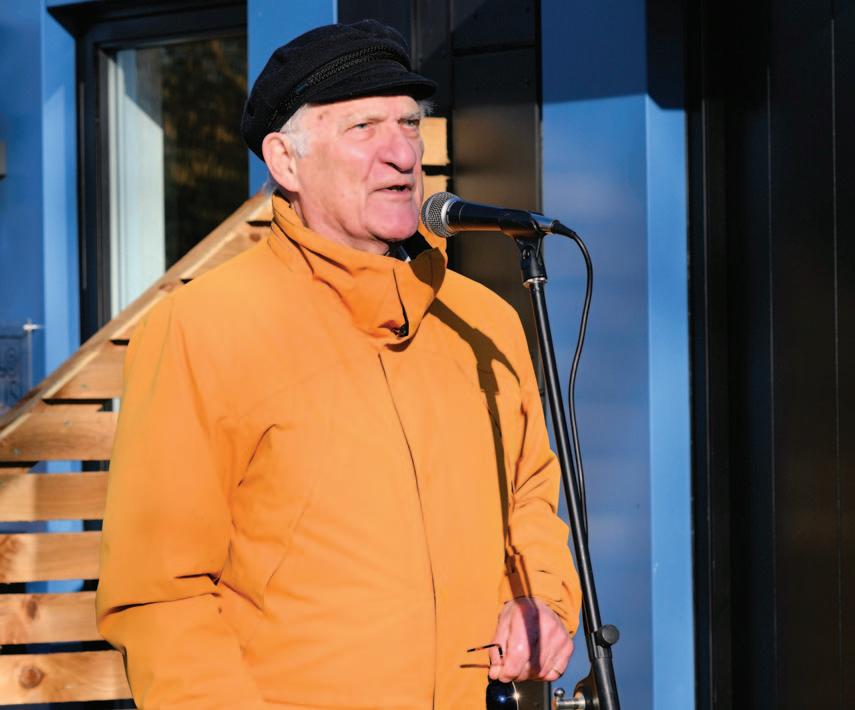
Selwyn moved on to create Emmaus UK. Today it provides home, companionship and meaningful work for over 1000 formerly homeless people in 30 Emmaus communities and three local charities are working towards setting up a residential community and social enterprise. Selwyn’s goal is to see an Emmaus community in every UK town and city, giving homeless people the self-respect they desire, rather than handouts.
Margaret Clark, a seasoned leader in global management will be speaking at 12.45pm.

Margaret has had a career in global management and leader-

n Between 60 and 70 people attended Mass on the feast of the Exaltation of the Cross at St Pancras in Ipswich on September 14.
Fr Joseph Welch spoke about the beauty of relics and how the bodies of the saints, having been Temples of the Holy Spirit during the lifetime of the saints on earth, cannot remain unaffected by their proximity to the holy.
Just as an iron bar withdrawn from the furnace retains some of its heat, so the bodies of the saints retain something of the holiness that they once embodied. Similarly, the instruments of the Passion become holy as a result of their contact with the divine. At the end of Mass, parishioners had the chance to pray before and venerate a relic of the True Cross. After Mass, parishioners retired to the parish hall for the monthly Thursday lunch to raise funds for Mary’s Meals.
research into the causes and effects of poverty. In a vol untary capacity, she has held the position of Chair of the Tees Valley Ministry and District President of the St Vincent de Paul (SVP).
Throughout her career and voluntary activities, Margaret has demonstrated strong leadership and the ability, as well as the passion to encour age others to get involved.
ship within the public, private, and charitable sectors.
Throughout her career she has taken a special interest in embracing diversity to bring about equity in the workplace and wider society, with a focus on empowering marginalised communities. Margaret is a past president of the National Board of Catholic Women (NBCW) and is currently their representative in the Diocese of Middlesborough.
She holds an MBA and an MSc in Social Research Methods, which involved
Margaret is cur rently supporting the synodal journey in her local area and has a special interest in reaching out and listening to all, with a focus on the margin alised. She is also undertaking an appreciative inquiry into the future of the NBCW, aiming to link the generations so that a united organisation can pro gress into the future.
All are welcome to the Caritas Festival; drop in when you’re free or stay for longer. Mass is at 9.30am and there will be a closing liturgy at 2pm.
Tea and coffee will be avail able all day.
Venue: St Laurence’s Church 91 Milton Road, CB4 1XB.
Read the latest Diocese of East Anglia news at www.rcdea.org.uk


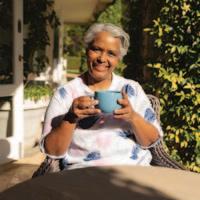

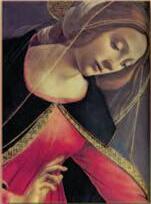
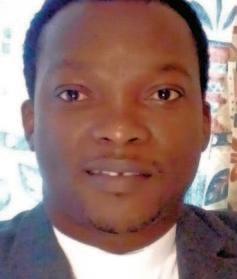 Alvan Ibeh in his latest Voice of Hope series.
Alvan Ibeh in his latest Voice of Hope series.
n Have you noticed that the year is gradually coming to an end again? I can't believe how time flies, my dear friends. We thank God for the gift of life and for bringing us thus far. If we look back and see how many people we have lost already in the year, we cannot but raise our hands in joyful praise, adoration and thanksgiving to God for goodness and mercies to us.
Just a reminder, my dear friend: you and I are not alive today because we merited it or because it is our right. It is not even because we are better than those gone before us. It is only by His grace. We are not consumed because of His mercies because his compassions fail not. They are new every morning: great is His faithfulness (3:22-23). Let us always have this at the back of our minds and try not to forget easily.
Working as a priest in the parish and as a hospital chaplain, I have often been asked this common question: "If there is God, why is He not seeing all these sufferings, pains, and atrocities going on in the world?". I have always answered that we live in an imperfect
world, and what happens to one happens to the other. We all feel the sun's scorching heat; we all feel it when it is bitterly cold. Cancer does not ask you if you believe in God; when Covid came, it killed both believers and unbelievers; the rich and poor were infected with it. Death also happens to us; it does not take permission before it strikes. It comes for the good and the bad as well. All these came to be as a result of sin.
Remember, there was nothing like death at the beginning until Adam and Eve disobeyed God. The Scripture in Genesis 1:31 says, "God saw all that he had made, and it was very good". This phrase reflects God's satisfaction and approval of His work. It also implies that God's plan, power, wisdom and authority are perfect.
This phrase was used six good times in Genesis chapter 1, and the final time, it is modified to "very good", which indicates the completion of God's creation.




God planned that we will always be with Him and enjoy His glory. But the devil lured our first parents into disobeying God even after He had warned them. Their sin of disobedience came with consequences, and because we have inherited this sin of theirs (original sin), we are also suffering from the consequences today.
Sin and its consequences brought about hopelessness. But God, in His mercy, did not leave us in this state of hopelessness. He heard the cry of His people who needed to be saved and sent His only Son as a Saviour. His death on the cross brought us hope that no matter what we are going through today, it shall come to pass one day.
God indeed heard our cries and came to our rescue. Therefore, we need to be aware that God is not the cause of whatever evil is going on in the world today. It was never in His plan for children to die of hunger and starvation, for people to kill themselves in war, for diseases of different kinds to ravage his people, etc.
His plans for us are perfect, and that is why He has not given up on us despite our sinful and rebellious ways. His word in Isaiah 59:12 says, 'Yahweh's arm is not too short to save nor his ear too dull to hear, it is your sins, rather that separate you from God. It is your iniquities that veil his face so that he does not hear you".
Though we disobey God and thereby separate ourselves from Him, He still waits for our return. He still hears our cries for help. But this we must do while we still have the time, "for God says, "At just the right time, I heard you. On the day of salvation, I helped you." I tell you, now is the day of salvation" (2 Corinthians 6:2). Our part is to cry out to him and try to turn away from sin, "But to Zion he will come as redeemer and to those of Jacob who turn from sin".
When we have done our part, we then leave the rest for God who is ever faithful to His words. Isaiah 59:21 says, "For my part, this is my covenant with them, says the Lord. My spirit, which I have poured out on you, and the words I have put in your mouth, will never leave you, your children, or your children's children forever and ever". What a great assurance we have here. We will conclude this topic in the next edition. May the peace of God be with you.
Diocese of East Anglia

Safeguarding Coordinator, Mick Thurley, recently spoke to over 150 criminal justice delegates on the subject of Safeguarding within the Catholic Church at a conference in Cambridgeshire.
n The event was hosted by the Cambridgeshire and Peterborough National Probation Service at Hinchingbrooke Country Park. Mick informed them of the safeguarding journey of the Catholic Church, the safeguarding structures both nationally and within the diocese and parishes. He also spoke of the pivotal role of key persons including the Bishop, clergy, and the diocesan Safeguarding Team, which includes the Parish Safeguarding Representatives. Mick also spoke about the management of offenders within our communities.
Other presenters at the conference included members of the Cambridgeshire Police referral hub, Children’s Services, Domestic Abuse specialists and a charity working with homeless persons. Following the presentations, Mick was invited to be part of a panel of experts answering questions relating to safeguarding.

After the event, Mick said: “This was a great opportunity for us to showcase what we do and it was important that we support the statutory authorities in
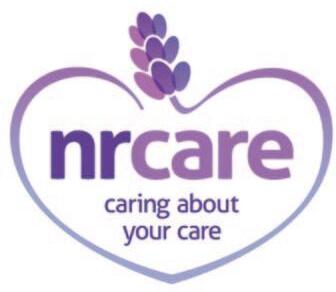
events such as these and also promote safeguarding within the Catholic Church, and of course the diocese. Part of my presentation was around victims and how we listen to and respond to allegations, and I would urge anyone affected by abuse to speak to me or someone in their parish.”
Matthew Ryder, Head of Cambridgeshire and Peterborough Probation Services said, “Mick’s insightful and informative presentation as part of the Safeguarding Panel left a lasting impact on our team. The depth of knowledge and expertise he shared with the staff group
enriched our understanding of Safeguarding from a multi-agency perspective. His dedication to creating safer communities and protecting the most vulnerable members of our society came across powerfully.
“The knowledge and inspiration he provided will undoubtedly guide our team as we continue our mission to empower individuals and create positive change in our communities.”
Pictured above is Mick Thurley (far left) on the expert panel at Hinchingbrooke.
In a Pastoral Letter for Education Sunday in September, Bishop Peter Collins outlined his vision for Catholic education within the Diocese of East Anglia.
n The reasons why the Catholic Church establishes and sustains a network of schools was highlighted most eloquently in the 2005 document entitled Christ at the Centre: Our Catholic schools are critical to the mission of the Church, providing an arena where Christ is proclaimed and encountered. Parents are the primary educators of their children and the Church recognises how essential it is to support families with Catholic schools which offer excellence in all aspects of provision.
With Christ at the Centre, the vision for Catholic education will always prioritise the well-being and fulfilment of the human person. Whilst seeking the best possible outcomes in every subject, it is the spiritual formation of our children and young people in Christ that inspires and moulds our entire educative enterprise.
The Catholic school draws its identity and understands its mission from the recognition that it belongs to the diocesan family and is thus empowered to be of service to parish communities and to every Christian home – which is aptly described as the domestic Church.
With Christ at the Centre, the Catholic school is not an isolated enclosure but a vibrant community that endeavours to provide an evangelising witness in the midst of wider society.
Gospel values and the rich tapestry of Church teaching frame and enhance every aspect of life within a Catholic school. The Diocese of East Anglia is blessed with Catholic schools that are diverse and inclusive environments where faith and reason creatively combine enabling all to explore the horizons of our knowledge and experience.
We pray for a blessing upon our current cohort of pupils and staff across the diocesan network of schools. As they embark upon a new academic year may they draw inspiration and strength from the Lord who says in today’s Gospel, “Where two or three meet in my name, I shall be there with them.”
We rejoice that our senior leadership teams, our teachers and support staff are
so committed to communicating our shared vision. We are fortunate in having so many people who are willing to play their part in exercising the responsibilities of governance in our Trusts and schools. I am also appreciative of the contribution of our parish clergy and other local volunteers who contribute so much to fostering coherence between church, school and home.
Some years ago, our diocese took the decision to establish two Catholic MultiAcademy Trusts (CMATS), seeing this to be the best possible means of safeguarding and supporting the provision of Catholic education across our region. This decision envisaged that all our maintained voluntary-aided schools would join the Trust structure. Our twotrust model provides an effective framework of support and encourages the sharing of best practice.
Following their establishment in 2015, both Trusts have grown and are thriving.
St John the Baptist CMAT largely covers the northern half of the Diocese whilst Our Lady Of Walsingham CMAT covers the southern half. Seventeen of our maintained schools have already joined one or other Trust and are enjoying the benefits of membership.
While the policy of the diocese has been clear for some time, a minority of schools have not yet expressed a clear commitment to join the Trust structure.
As we mark Education Sunday, I wish to make clear my vision for Catholic education within the Diocese of East Anglia.
We all desire the very best for our children and young people. I am fully convinced that the most effective way of enabling all our schools to fulfil their mission is for them all to find their home within our structure of Diocesan MultiAcademy Trusts. Both of our Trusts have already gained critical mass to ensure resilience.
It is no longer tenable for a minority of our schools to remain outside of these structures. The full potential of both Trusts and the full potential of all our schools can only be unleashed when we pool our resources in the most effective way possible.
In service to the common good, I call upon all school communities that are not yet within the Trust structure to engage positively with the Diocesan Schools’ Service in formulating a plan of action that will ensure future membership of our diocesan CMAT’s according to a mutually agreed timetable.
Start dates throughout October and November 2023 for a 6-12 month gap year experience.
A bit about L'Arche: L'Arche is a network of Communities which supports adults with Learning Disabilities. Our Communities comprise of households in which people with and without Learning Disabilities live alongside one another, sharing the joys and challenges of life, and form unique friendships not often seen in wider society. L'Arche is a committed care provider that seeks to support the physical, medical, social, emotional and spiritual needs of its community members. L’Arche Ipswich is recruiting for Gap Year adventurers to live in Community, learning care skills and sharing life with people they may not ordinarily encounter. Previous and current assistants have described the experience as life-transforming.
Learn what others had to say here: www.larche.org.uk/assistants’
This opportunity is made up of Community Living activities and Personal Care tasks.
Community Living: going out for coffee | watching TV | playing games | cooking and baking | walking | eating together | Video calling friends | going shopping | assisting in a L’Arche Workshop | art classes | dance and drama activities | singing songs | household chores | community gatherings and celebrations | holidays | cinema trips | worship services/reflections
Personal Care: supporting morning and bedtime routines | administering medication | assisting with personal hygiene | supporting meal times | aiding mobility
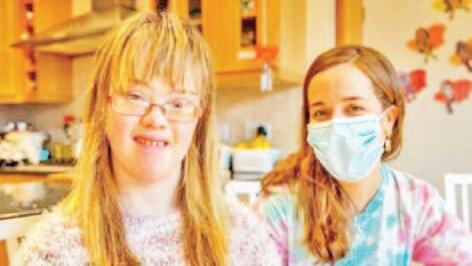
You don't need to have prior experience to thrive in this role, we'll train you up. The main thing is that you are willing to throw yourself into Community life (which is a lot of fun!).
We think it could be a good fit for someone:
• pursuing a career in psychology, but in need of more practical experience
From August 12 to 17, the Diocese of East Anglia hosted the KSC Relic Tour 2023, showcasing relics of St Columba, St Andrew, and St Margaret at various Masses across the region.
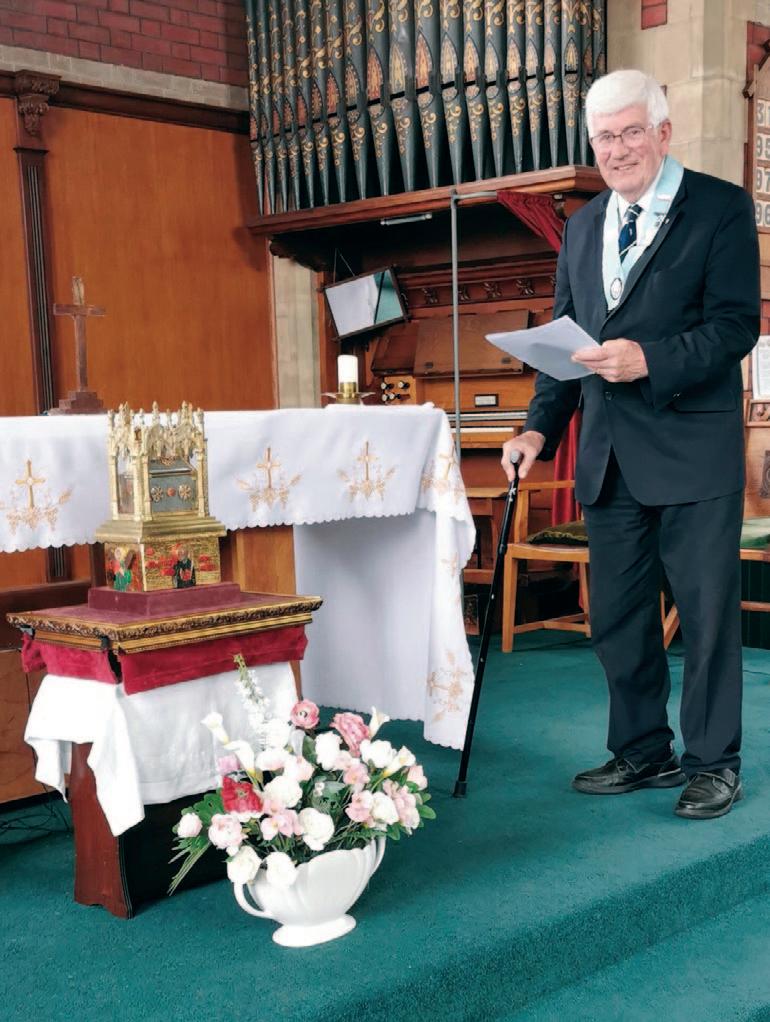
Organized by the Knights of St Columba, the tour showcases a specially crafted reliquary containing the relics of St Columba, St Andrew and St Margaret. This reliquary, designed by young people in Scotland, has been touring the country. The reliquary serves as a symbol of faith and tradition, and the Grand Knight of East Anglia Province 27, Jason Wickard, ensured that it was present at Masses across the region in Lowestoft, Norwich and King’s Lynn.
The Masses allowed time for short reflection, prayer, and veneration afterwards.
• looking for a gap year
• interested in volunteering
• exploring the charity sector
• who is unsure of their next steps, but wants to make a difference
• who would like space to explore personal growth and/or spirituality
• interested in the health and social care sector
• looking for a unique, hands-on experience
You will be a voluntary worker if you take part in this Gap Year opportunity, however food, accommodation and a subsistence (£334 per month) are provided. There is also the potential for retreats, holidays and reflection days.
To find out more please go to: www.larche.org.uk/assistants
To apply for the post of Live-in Assistant, please send your CV to: ipswichrecruitment@larche.org.uk
Interviews will be held in Ipswich throughout October and November 2023

n Sept 29, Fri: All Schools Mass at the Cathedral – 12 noon and then lunch with 800 children and teachers
n Sept 30, Sat: Meeting of the Commission for Dialogue & Unity – 11am, Poringland
n Oct 5, Thur: Annual Meeting of the Retired Priests in Poringland – 11.30am Mass, 1pm Lunch, Poringland
n Oct 6, Fri: Meeting with Director of Education Andy Stone and school lay chaplains – Poringland.
n Oct 7, Sat: Visit to HMP Littlehey, Huntingdon
n Oct 9, Mon: Visit to Sacred Heart School – Peterborough, to celebrate 50th Anniversary of the school.
n Oct 10, Tue: Bishops’ Meeting and Feast Day – St Mary’s College Oscott
n Oct 12, Thur: Diocesan Liturgy Commission Meetings –Poringland
n Oct 12, Thur: Commission for Catechesis and Formation
n Oct 13, Fri: Meeting with Brendan Metcalfe Executive Director of Friends of the Holy Land – White House, Poringland
n Oct 14, Sat: Annual Gathering of Deacons, Wives and Students in Formation of the Diaconate – Cathedral Mass, 12.15pm, followed by a buffet lunch
n Oct 19, Thur: Meeting of the Deans – Poringland, 11am.
n Oct 20, Fri: Vocations Committee Meeting – Poringland, 11am.
n Oct 21, Sat: Marriage & Family Life Commission Meeting – Poringland, 11am
n Oct 22, Sun: Friends of the Cathedral AGM – after Mass
n Oct 23 – 27, Mon – Fri: Diocesan clergy Retreat –Ammerdown, Somerset
n Oct 28, Sat: Caritas Steering Committee
n Oct 30, Mon: Confirmation
Mass – at St Henry Morse, Diss
n Oct 31, Tue: Confirmation
Mass – Our Lady and St Peter, Aldeburgh
n Nov 1, Wed: All Saints Solemn Pontifical Mass – St
John’s Cathedral
To read the latest Diocese of East Anglia news, as it happens, sign up for our enews bulletin at www.rcdea.org.uk

Pictures by Joshua Clovis. To see full picture gallery visit: flickr.com/photos/dioceseofeastanglia
Around 3,500 faithful from over 30 nationalities gathered at the Catholic National Shrine of Our Lady in Walsingham, led by Bishop Emeritus Alan Hopes, for the Dowry of Mary Pilgrimage, highlighting the deep-rooted history and universal reach of the Catholic Church. Joshua Clovis reports.
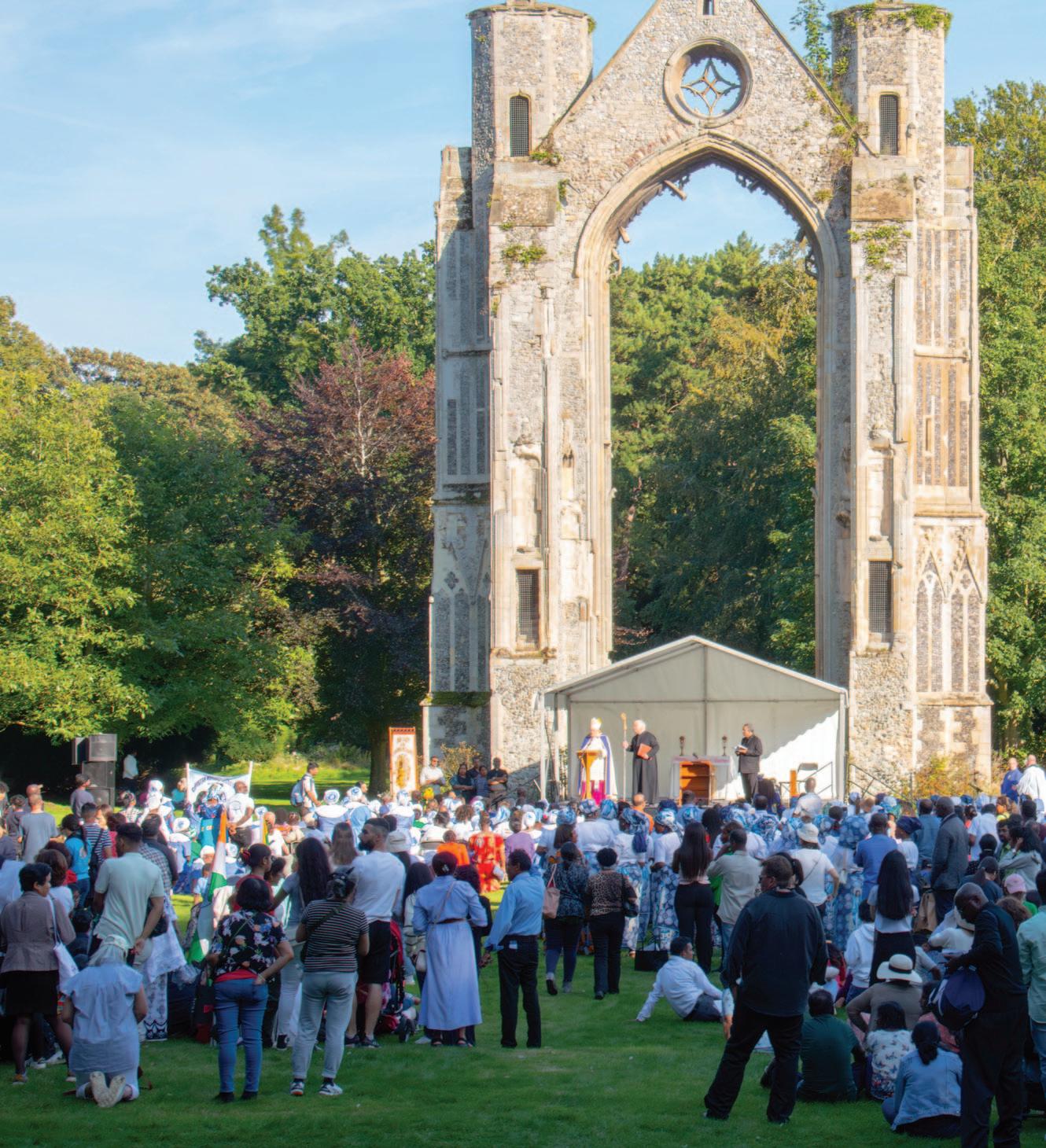
n On Sunday September 3, the Catholic National Shrine of Our Lady in Walsingham hosted the Dowry of Mary Pilgrimage. Led by Bishop Emeritus Alan Hopes and accompanied by Father Robert Billing, the new Rector of the Shrine, the event drew a crowd of around 3,500 people, from over 30 nationalities.
The day began with a flag presentation, where representatives from various nationalities and chaplaincies around the country
offered their flags to Bishop Alan, symbolizing the universal nature of the Church. Immediately after, Bishop Alan celebrated Mass and delivered a significant homily.
In the homily, he traced the history of the pilgrimage site, saying, “Nearly 1,000 years ago, in 1061, Mary asked Richeldis, the lady of the manor here in Walsingham, to build a copy of the Holy House of Nazareth.” He further expanded on Mary’s role as the Ark of the Covenant: “She is the house of God; she is the Ark of the Covenant. From all eternity, God prepared Mary, preserving her from original sin, filling her with His grace so that His Son might have a fitting dwelling place on Earth from the moment of His conception.”
He emphasized Mary’s role as a dwelling place for Jesus, stating, “Mary not only kept the Lord Jesus Christ safe and warm in her womb; her interior beauty of spirit gave Him glory and honour, as no place built by men could ever hope to do.”
Bishop Alan went on to connect the significance of the Holy House with the Eucharist:
“Our love for Our Lady leads us naturally to the love of the Holy Eucharist, of the Body and Blood of Jesus Christ. For the Eucharist is an extension of the Incarnation, when God in Jesus walked upon Earth. Here in the Eucharist is the real presence of God amongst us until the end of time,” he said.
“At the end of Mass, we are sent out to be the very presence of Jesus Christ in our world. We are to proclaim His Gospel; we are to live as those who have experienced His love and mercy in our own lives. We are sent out to commit ourselves to love and serve those who are in need, and to bring others to know and to love the Lord”, Bishop Alan concluded.
Following Mass and lunch, attendees processed down the Holy Mile to the Abbey grounds, the original site of the Holy House.
There, Bishop Alan performed Benediction in front of the Lonely Arch.
The Dowry of Mary Pilgrimage was not just an event but an enriching experience, serving as a reminder of the deep roots of faith and community at this venerable site.
3,500 hers 3,500
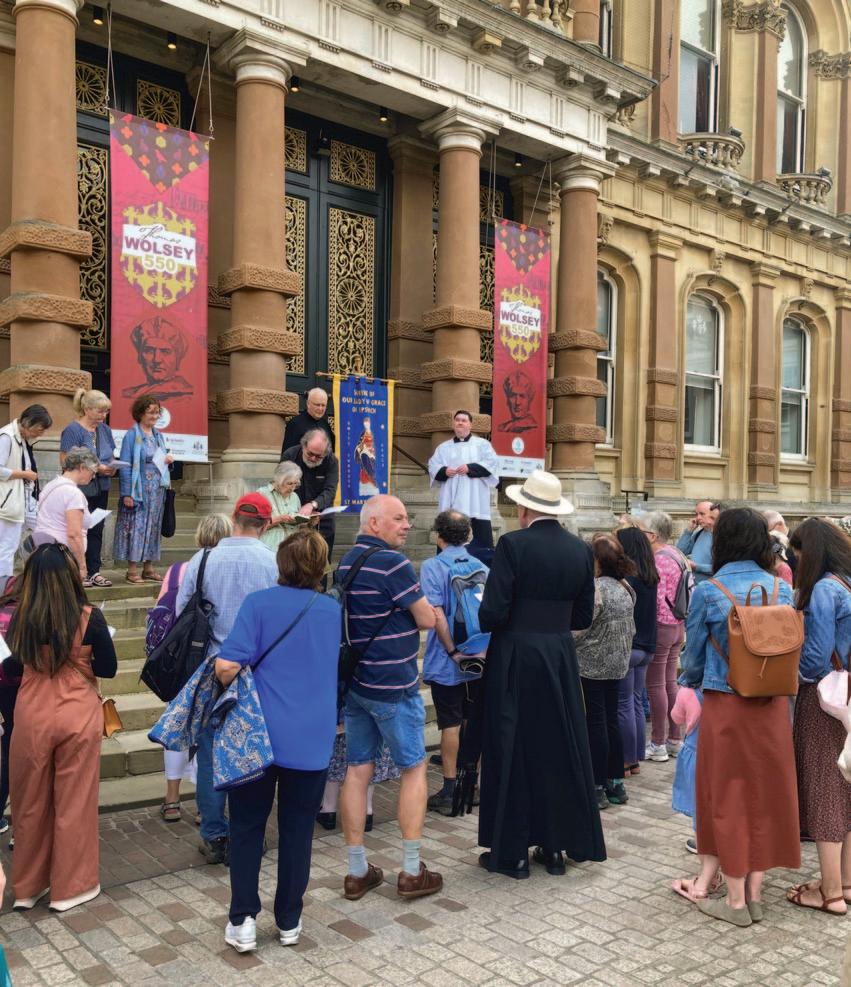
The annual pilgrimage to Ipswich’s historic shrines concluded on September 3, drawing at least 75 attendees and featuring an appearance by the Mayor. Led by local clergy, the walk commemorated Cardinal Wolsey and focused on Christian unity and devotion to Our Lady of Grace. Jean Johnson reports.

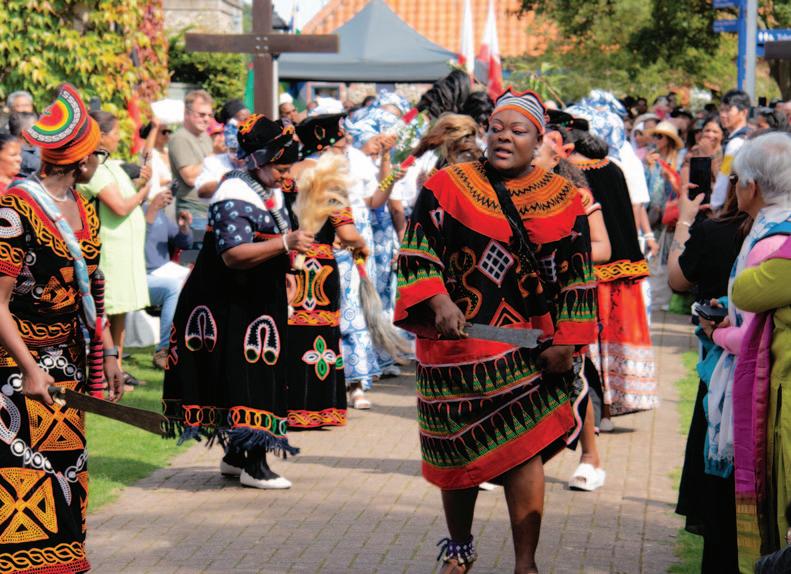
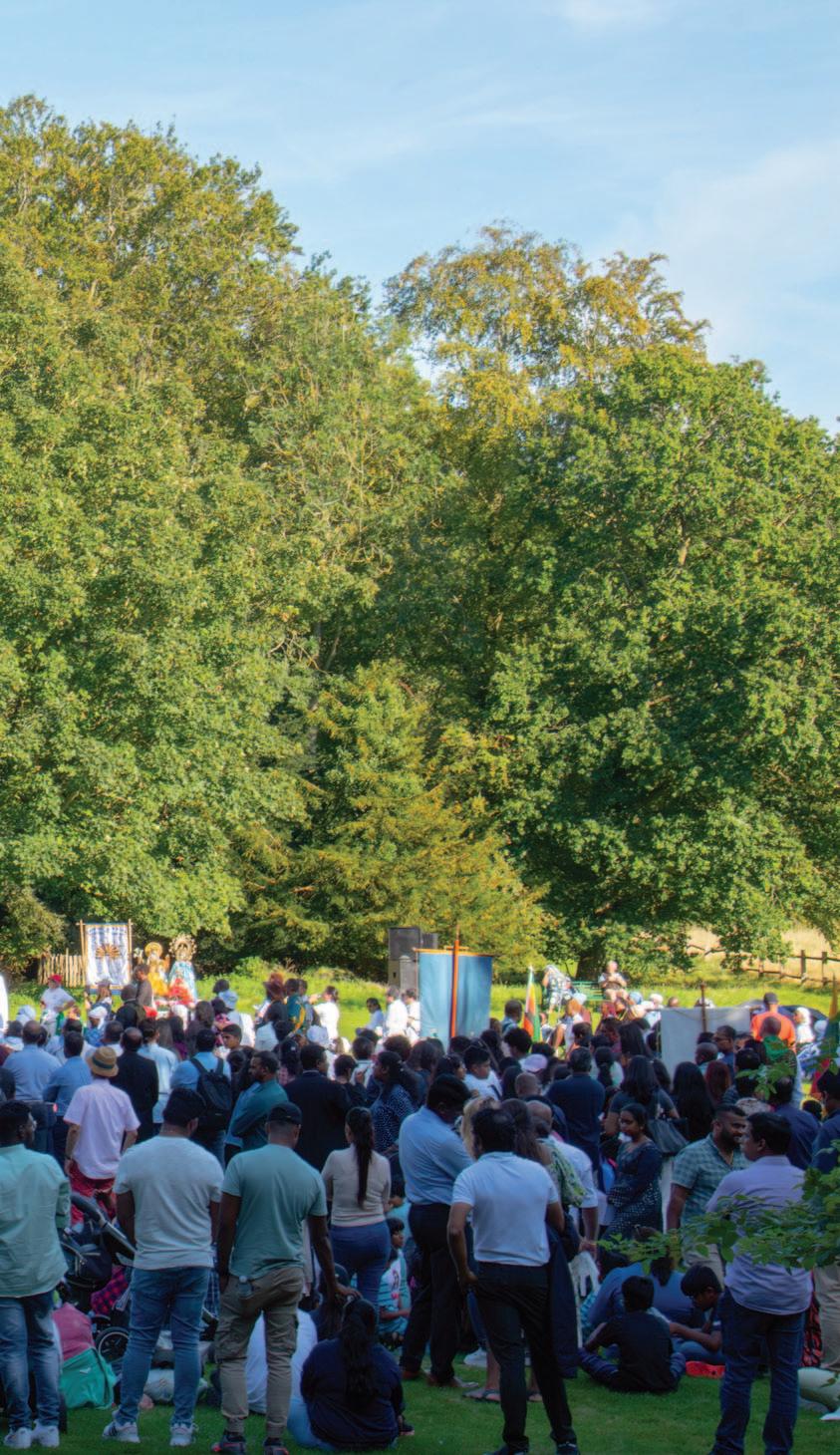
n The annual pilgrimage walk to the site on Lady Lane in Ipswich — home to the pre-Reformation shrine of Our Lady of Grace — and onwards to the ecumenical shrine at St Mary at the Elms, the church closest to the original shrine, took place on beautiful sunny Sunday September 3. We were privileged to welcome the Mayor of Ipswich, who is well-versed in the history and firmly believes that our original statue now resides in Nettuno, Italy. The ecumenical shrine features a replica of that statue, carved from English oak in Ipswich 21 years ago by a parishioner from St Pancras. Meanwhile,
St Pancras now has a statue carved and painted in Italy.
At least 75 people gathered at St Peter’s Church and followed the route originally planned by Cardinal Wolsey, who was born 550 years ago in Ipswich. The tradition of an annual walk along this route was revived in 1978, and five individuals present this year were part of that first pilgrimage. The walk was led by Fr John Thackray, vicar of St Mary at the Elms, who proudly carried our Guild banner, and by Fr Joseph Welch, the parish priest of St Pancras, representing Bishop Peter.
Walking in silence, we made five stops to recite the Joyful Mysteries of the Rosary and to sing appropriate hymns. Upon our final arrival at Lady Lane, members renewed their commitment to pray for unity among all Christians through the intercession of the Blessed Virgin Mary, and to promote devotion to her under the title of Our Lady of Grace.
Fr Joseph then led a brief service at the shrine. His homily, which quoted St John Henry Newman, focused on the significance of honouring Our Lady. The event concluded with refreshments and was a joyous occasion. Next year, we plan to celebrate on Sunday September 8 — Our Lady’s birthday — and hope to welcome even more pilgrims.
n The St Vincent de Paul Conference at the Sacred Heart Parish in St Ives recently organised the annual boat trip for the elderly and disabled who were collected from their homes and nursing homes by the SVP members and Fr Tom.
It was a fine sunny afternoon to enjoy the sail on the Lady Bird boat specially adapted for the elderly and disabled. The boat left Hartford Marina at 2pm sailing to Brampton and returning via St Ives to Hartford Marina at 4.30pm. During the sail, tea and cakes were served to those on board by SVP members.
The President, Elizabeth Barker, said that it was a wonderful outing for so many who are unable to leave their homes unaided and a good time was had by all.


At the start of the academic year, Kate Pereira, Headteacher of St John Fisher Catholic High School in Peterborough, outlines the many positive reasons for sending children to a Catholic school.
n Young Catholics who attend Catholic schools speak very highly of their school experiences, citing regular opportunities for the celebration of Mass together and the centrality of prayer and liturgy supporting them on their faith journey. However, what echoes most often in the undercurrent of all Catholic schools is that special something that nobody can put their finger on, strong relationships, that feeling of warmth and welcome we are not afraid to proclaim as the presence of the Holy Spirit, at work in and through everything.
n Choosing a Catholic school


Since the removal of free Local Authority transport for denominational schools, some families have found it very difficult to send their children to a Catholic school. The reasons for this are varied but are mainly due to distance from home and the cost of getting children to school.
Catholic children who live a long distance away from their nearest Catholic school have had to rely on family transport, public transport or school buses which can be expensive. This has left some Catholic families on lower incomes usually from rural communities often making difficult decisions about where to send their children to school. This gets even more difficult when choosing a secondary school.
There are only six Catholic secondary schools across the whole Diocese which includes St Bede’s Inter-Church School in Cambridge and St Mary’s Independent All Through School, in Cambridge and unfortunately, this landscape is unlikely to change in the near future. There is an opportunity here for parishes to support such families to give their children a Catholic education and to help financially with transport costs.
One huge advantage of attending a Catholic school is the centrality of Religious Education to the curriculum in Catholic schools. The recent publication of the new RE Directory for Catholic Schools provides a rich source of knowledge and understanding of the Catholic faith, and genuine encounter with other faiths within the current world in which we live. The amount of time dedicated to the study of RE also means extra time spent on developing the skills associated with the subject such as thinking skills, oracy, reading and writing skills, analysis and debate.
Having strong links with the local parishes and deanery is of paramount importance in order for students to understand their part in the common mission and universal, global nature of our church. The sacramental presence of God through reconciliation and the eucharist in our Catholic schools can only happen because of these close links.
Rowena Goodfellow, Lay Chaplain and Foundation Governor at St John Fisher Catholic High School in Peterborough, shares one of her recent experiences of strong parish links: “During the week leading up to our Easter para-liturgies, via our daily thought reflections, we focussed on the stories around Holy Week culminating in Christ’s passion and resurrection on the last day of term. This was beautifully told through our student readers, drama tableau, music and supporting images and scripture. The atmosphere was set with our lighting, carrying us through the emotions of the darkness that overcame the world when Jesus died and the golden light of his glorious resurrection.
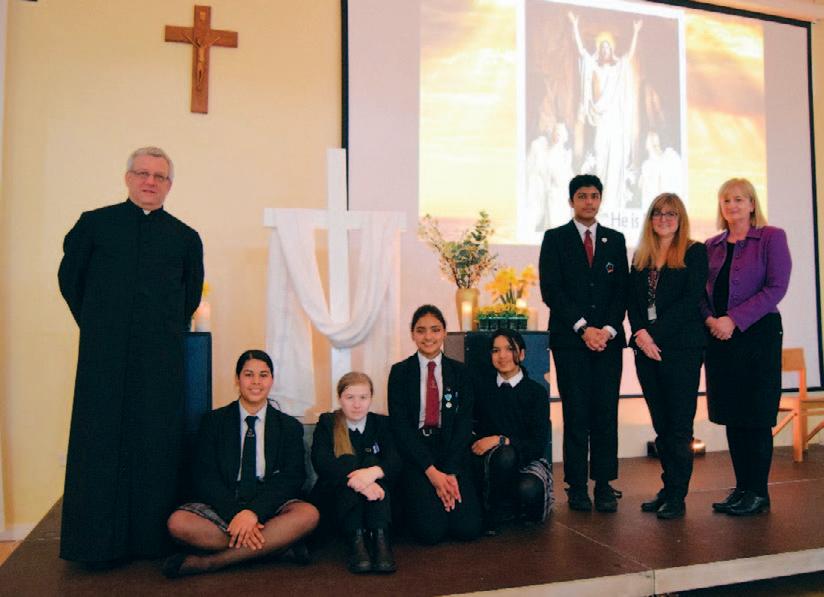
“Students and staff commented on how well all those involved portrayed this and how connected they felt to those events so long ago, yet present with us through the service. It all came together at the end with spring flowers, candles and the cross with the white cloth draped to symbolise that ‘He is Risen!’.”
Izabelle Winlock Year 11 (drama and soloist), who took part in the Easter liturgy, said: “Performing for the Easter liturgy was a really amazing experience as it allowed me to express my faith through drama and music, both subjects I’m really passionate about. I really enjoyed performing and it helped develop my own skills as a musician and an actor as well as my faith and beliefs.”
Our Catholic schools have Christ at their centre and always aim for excellence in
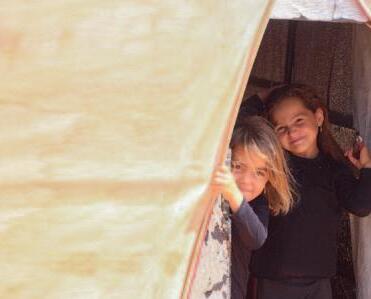
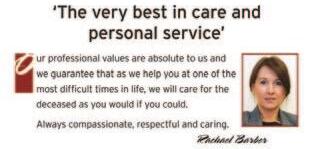
every aspect of their being. This is because their mission demands real human flourishing in order for our society and future society to flourish too. In other words, children and young people in Catholic schools are formed to contribute to the common good of society.
We have always and will always need good, joyful, hopeful, faithful people in our world to face the current challenges and, most importantly, people who will take action. Past pupils often come back to school and talk about how transformative their time at school was, although they may not have realised it at the time, and some come back to teach and work there.
Many families have sent generations to the same Catholic schools. Families report on how their grown-up children have become advocates for change in whatever areas of life they entered into, from politics to aid work to business and medicine. Some even join protest groups or travel to less desirable places in the world to offer help and support. At the heart of this is service to others.
The formation of our children and young people is of prime importance and our Catholic schools are doing just that. Incidentally, it is not only Catholic children and young people who flourish in this way. Catholic schools are inclusive and welcoming of everyone, so one of the strongest and most tangible aspects universally experienced in our Catholic schools is the innate dignity of the human person, regardless of background or religious belief.
So, let us not forget that the mission of our Catholic schools is also the church’s mission. This is a mission deeply rooted in the biblical redemptive concept of human flourishing, demanding respect for the dignity of all people and the safeguarding of basic values and resources needed for the whole of creation to flourish. This is when we see the glory of God and this is why our school motto is: ‘I have come that they may have life and have it to the full’ (John 10:10).
A red carpet fundraising evening has raised £4,000 towards the £1.3m needed to repair structural damage at St Peter and All Soul’s church in Peterborough.
n Representatives of the Diocese of East Anglia, parish priests and parishioners enjoyed a gala dinner and dance at the West Thorpe Wood Holiday Inn hotel in Peterborough on July 1 to raise funds to repair church buildings which have suffered structural damage.
Fundraising coordinator, Charles Benjamin, said: “The evening attracted the presence and full participation of the different communities constituting the parish in a colourful evening of food and dance.
“The highlight of the musical entertainment was the playing of cellos by two parishioners, Charlotte McAuliffe and eight-year-old Allegra Benjamin. The Filipino community performed the Tinikling Bamboo Dance. We also had a live band, the Watson & Bright Trio and a DJ.

“As well as enjoying a three-course meal and drinks, participants were thrilled, entertained and exposed to history and spirituality raising £4,000,” said Benjamin.
“The actual sum needed to accomplish the repair of the structural damage is £1.3m. The repairs are imperative because of the historic significance of the parish to Peterborough and the great services it renders to the city.”
You can see a video picture gallery of the evening at: www.stpetersallsouls.com/fundraising-events
n Bertie, the newest member of St Mary’s Great Yarmouth St Vincent De Paul (SVP) conference, has proved a big hit with hospital patients, young and old as well as school children.
Bertie the dog (pictured right) belongs to Rosemary Williams, one of the SVP members in Great Yarmouth and is a registered Pets As Therapy dog or PAT dog for short.
Every week he visits the James Paget Univer sity Hospital in Gorleston where Rosemary is a volunteer.
Rosemary said: “Bertie is a big hit with the patients especially the children and the very elderly and dementia patients who love to interact with him. He is so good with them, calm and immensely patient and placid.
“Family members and visitors are often delighted by this and on occasions are moved to tears to see some recognition or reaction to Bertie especially during his visits to the stroke unit.”
Bertie, who is a cross-breed Cavapoo, and Rosemary have been asked to visit ‘end of life’ patients where his calm presence has brought comfort to the person and sparked conversations with family members and friends about shared memories.

“To be allowed such an amazing privilege is a blessing, said Rosemary. “He is also popular with staff who love a few snatched moments of Bertie time during their busy shifts, in fact, one of the consultants asked me if I could bring Bertie in more than once a week.”
Bertie always accompanies Rosemary to the hospital chapel at the end of each visit to pray for all the people they have seen that morning.
Bertie also visits a local school once a week as part of a Pets As Therapy scheme called Read2Dogs where he helps
n Director of Music for the Diocese of East Anglia, Daniel Justin, has been appointed as Director of Music at the prestigious St Mary’s Cathedral, Sydney, the “mother church” of Catholicism in Australia.
As the Director of Music, Daniel will oversee all musical aspects of the cathedral, including the renowned choir, organ performances, and the coordination of special musical events and liturgies and the role is effective from early October.
Speaking about the appointment, Daniel said: “I was thrilled to receive the news that I will be moving to be Director of Music at St Mary’s Cathedral, Sydney, but tinged with a little sadness to be leaving the Diocese of East Anglia. I have had eight very happy years working in the diocese and Cathedral, and Norwich has been a real home for me, in the people I’ve worked with and friends I’ve made.”
Daniel was appointed as Director of Music for the Diocese of East Anglia in 2015, to further the desire of Bishop Alan Hopes that the Cathedral should be a centre of excellence for sacred music and liturgy. He founded the Cathedral choristers in 2015, a group of 20 children from local primary and secondary schools, who now sing at the Solemn Mass every Sunday in the Cathedral.
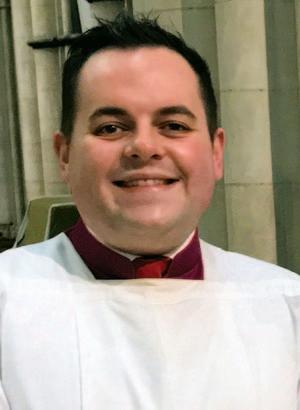
The Cathedral also has a Schola made up of local professional singers, who specialise in the performance of Renaissance music and Gregorian chant.
Bishop Peter Collins said: “I wish to express my congratulations to Daniel. He certainly deserves to occupy his new post at one of the most prestigious Catholic cathedrals in the world. Since becoming Director of Music within the Diocese of East Anglia in 2015, Daniel has established a platform of musical excellence at the Cathedral of St John the Baptist. Daniel formed and supported the development of the Cathedral Choristers and Schola, ensuring that the highest standards of performance were achieved. He has also fostered the development of musical engagement across the network of our diocesan schools.
“The artistic excellence of Daniel’s musicianship has been manifest in his compositions and arrangements, in his performance as a most talented organist and in his exceptional ability to lead and motivate others in their fruitful participation in the Sacred Liturgy. Beyond his musicianship, Daniel has offered an example of deep faith and committed service that has brought many blessings to the cathedral in particular and to the diocese in general.
out with children who are nervous or may have learning difficulties.
He and Rosemary accompanied another St Mary’s SVP member on a ‘one-off visit’ to a local care home to visit a parishioner who loves dogs and she was delighted to cuddle Bertie and share him with the other residents.
“Bertie attends our SVP meetings with me,” said Rosemary, “and once he has had a treat off one other dog owner in the conference, he sits there as good as gold until the last prayer is spoken.”
Find out more at: petsastherapy.org
“When Daniel informed me that he had applied for the position in Sydney, I was confident that he would be successful. Whilst I am delighted to see Daniel progress to such a high profile posting, I am so sad to lose his dynamism from our own diocesan environment. Nonetheless, I am confident that the musical foundations which are now firmly established here in East Anglia will continue to progress and flourish in the years ahead. As we explore the options for appointing Daniel’s successor, I will ensure that the principles of musical excellence will guide our deliberations and decisions.”
St John’s Cathedral Dean, Fr Alan Hodgson, said: “It’s been great working with Daniel over the last year, and we will certainly miss his liturgical talents and musical gifts here at the cathedral. As well as music, Daniel has engaged with many areas of the cathedral life, and built close friendships with staff and parishioners. We will miss him.”
Former occupational therapist Mark Ashwood was ordained a priest by Bishop Peter Collins on Saturday July 8, at St John’s Cathedral in Norwich. Here is the story of his vocational journey in his own words.
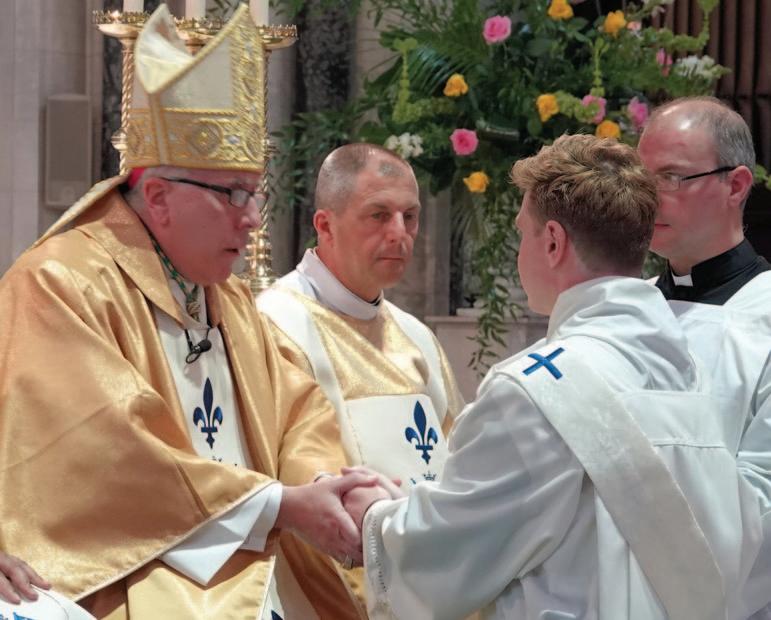
n The interesting thing about my vocation story is that I wasn’t raised Catholic; instead, I was born into a Church of Ireland family in Belfast, Northern Ireland. I remember the first time I set foot in a Catholic church. I was a teenager visiting with one of my friends. There must have been a Mass just before our arrival, as I could still smell the lingering incense. I was thoroughly impressed by the stained-glass windows and the religious art.
However, what impressed me the most was the sight of people sitting in front of the tabernacle in silent prayer. I instinctively knew that something significant was happening. Later, at university, I began attending Catholic Mass with some friends, and it felt like coming home. So I decided I wanted to become a Catholic. I shared this with the priest at my local church, who asked if I was getting married. He couldn’t fathom why else I would want to change my religion, as it’s not a common occurrence in Northern Ireland. I also faced opposition from some family and friends and felt discouraged. Much like the biblical seeds that landed on rocky ground, my faith didn’t take root.
My journey to Catholicism truly began after I finished my studies and moved to
England. I worked as an occupational therapist, specialising in hand and upper limb rehabilitation in London. Later, I moved to Norwich to pursue my PhD in Medicine and Health Sciences. In my first year there, I was received into the Catholic Church. At the University of East Anglia, I was actively involved in the chaplaincy, and Fr Andrew Eburne encouraged me to attend a national discernment festival at St Mary’s Seminary. So, I went along with some of the Sisters from the congregation of the Daughters of Divine Charity and some other students.
One of the nuns, Sister Linda, was
quite mischievous. She introduced me to every priest she knew, exclaiming: “This is Mark; he’s going to join the seminary!” She would then walk off, leaving me to explain to the bemused priest that I hadn’t considered the priesthood. However, something shifted during those few days. After a powerful talk on the priesthood and a sleepless night, I found myself in the chapel in the early hours, experiencing a moment of clarity during perpetual adoration of the Blessed Sacrament.
I felt the Lord calling me to be one of His priests. It seemed as though everything in my life had been leading up to
that point, preparing me for the priesthood. The Lord revealed to me that while I thought I had reached the top of the mountain, I was actually only on a hill, and my true journey was just beginning. He had more in store for me than I could ever have imagined. Instead of being a healer of the body, He intended me to be a healer of souls. It was a deeply moving occasion, marked by laughter and tears.
Throughout the remainder of my doctorate, I pondered that life-altering night and decided to formally discern my vocation. Thus, upon finishing my PhD, I commenced my seminary studies at Allen Hall in London.
Seminary life had its ups and downs, but ultimately, it helped me grow as a person and equipped me with the tools to share the Good News. It also blessed me with lifelong friendships. A highlight of my time in the seminary was serving the Parish of St Paul the Apostle in Wood Green, London, over the past year, as a deacon.
There, I was able to exercise my ministry – preaching homilies, baptising babies, visiting the sick, and working as a chaplain for the confirmation group. Having completed my academic studies this year, I am eager to begin my priestly ministry. I was delighted that Bishop Peter agreed to ordain me.
I am looking forward to embarking on my priestly ministry. My vocation was born and nurtured here, and I believe this is where the Lord has called me to be. Therefore, I eagerly anticipate serving the people of East Anglia as one of your priests.
nFr Mark has been appointed as Assistant Priest in St Edmund’s, Bury St Edmunds since September.
Vicar General of the Diocese of East Anglia, and former apostolic administrator, Canon David Bagstaff, talked to BBC Radio Suffolk on Sunday August 13 about his 47-year career as a priest and his journey of faith. Joshua Clovis reports.
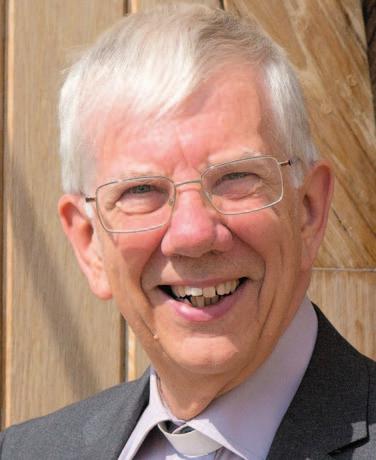
n In the recent interview on BBC Radio Suffolk’s “A Journey of Faith” segment, Canon David candidly discussed his calling, the varied experiences of different parishes, and his upcoming move.
Canon David began by talking about the beginnings of his faith: “Well I was brought up in Cambridge. My family, mum and dad, and brother; we were all Catholics, and we went to Mass every Sunday at the Church of Our Lady and the English Martyrs. So, from my earliest days, I always remember faith being a part of my life really.”
This prompted a question about how faith becomes personal, he said: “You
have to make it your own in the end because you go through challenges of life, and ups and downs, and that faith has got to become something which is not just the wallpaper but it’s something real to you and takes you through.”
Discussing his early call to the priesthood, Canon David reflected: “Sure, well, being at the Catholic school and being involved in the parish life as a young person, I was an altar server at the church of the English Martyrs, Cambridge, and I saw the witness that priests gave really, the good life they lived, the work they were doing in schools, in hospitals, visiting the sick, taking services, being there for people, and I think it sort of inspired me.”
He then delved into the challenges of becoming a priest at a young age and how the approach to priesthood may vary with age: “Sometimes people more naturally connect with someone who’s a bit younger, who has a different perspective on something. So I think human experience is important, but also there’s more than just human experience. You’re looking for someone who can be compassionate, who can walk with you
when you’re going through a dark time, and sometimes a younger person might be able to do that better than an older person who’s done other things in life before becoming a priest.”
Canon David then detailed the complexity of moving from parish to parish: “I’ve worked in most parts of the diocese
now. I’ve worked in Peterborough, which is very different from Suffolk and to Ipswich and Bury, but a great challenge. I really enjoyed it there. I worked in Ipswich some years ago. I’ve worked in North Norfolk up on the North Walsham part of Norfolk, in Norwich, and in Bury St Edmunds. And now, as you say, I’m about to declutter again and pack my bags and move to Aldeburgh about the third week of September. So each place brings a different challenge.”
Canon David then spoke about working together with other churches: “I’ve really thoroughly enjoyed it, and it’s great working with other churches as well. Because although I’m a Catholic, we work with other Christian churches, like here in Bury. I’ve worked with the cathedral here in Bury, and other local churches, so that’s always a great thing as well, working together rather than in competition.”
The conversation with Canon David Bagstaff provided a rare and inspiring glimpse into the life of a dedicated servant of the Church. His journey reflects the universal call of a priest to compassion, understanding and faith.
Presentations of Knights of St Columba competition awards to winning entries at St Mary’s Catholic Primary School (July 20) and St Augustine’s Catholic Primary School, Costessey (July 21) have been made.

n At St Mary’s – Lennon Shillings 2nd and Lily Nolloth 3rd place Lowestoft Council 518 and East Anglia Provincial Council 27 were presented with certificates and prize money for their Prayer for the Holy Father, his Life and his Ministry by Bishop Peter Collins who celebrated the end-of-term Mass, Head of School Mrs Goddard, Provincial Grand Knight Jason Wickard & past Provincial GK Christopher Brooks (pictured
above).
Cecily Huke-Jenner Year 4 was presented with her 3rd place Lowestoft Council award for her Prayer for Our Earth, your People and our Faith and Lily Gillings Yr 4 was presented with her 1st place Lowestoft Council and 3rd place East Anglia Province award for her Prayer for our Earth, your People and our Faith.
n At St Augustine’s: Head Teacher Rachel Swindell and past Provincial Grand Knight Christopher Brooks presented Alexandra Sasraku-Neequaye Year 6 1st Norwich Council 976 and East Anglia Province 27 Easter Scene Painting Competition; Vic-
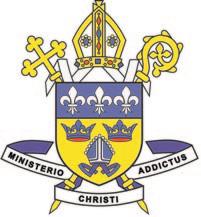
Bishop Peter Collins and several Catholic bishops in England have added their support to the Catholic Union’s campaign to scrap the cap on faith-based admissions to new free schools.
n The Catholic Union, which launched the campaign earlier this summer, is encouraging people to add their names to an open letter calling for the cap to be lifted. Over 1000 people have signed the letter to the Education Secretary, Gillian Keegan MP.
Bishop Marcus Stock, Bishop of Leeds, and Chairman of the Catholic Education Service, said he was “pleased to support the new campaign launched by Catholic Union to lift the 50 percent admissions cap on new free schools with a religious designation.”
Other bishops to have backed the cam-
paign so far include Archbishop Bernard Longley; Archbishop of Birmingham, Bishop Peter Collins; Bishop of East Anglia, and Bishop Paul Swarbrick; Bishop of Lancaster.
The 50 percent cap on faith-based admissions applies to oversubscribed free schools with a religious character in England. Introduced by the Coalition Government in 2010, the cap has made it impossible for Catholic bishops to sanction new Catholic free schools as it would lead to pupils being turned away on the basis of their Catholic faith.
The Catholic Union, along with the Catholic Education Service and others, has been calling for the policy to be reversed since it was first introduced. The 2017 Conservative manifesto committed to lifting the cap, but this was never achieved.
As well as making Catholic education more widely available, the letter to the Education Secretary says that lifting the cap “would help boost morale” in a sector that has struggled with pay and conditions and the pressure of inspections.
toria Unazi 3rd place Norwich, East Anglia and also 3rd in the National final round; Ifunanya Kenechukwu 2nd Norwich & Province. Alexandra and Ifunanya also received national participation certificates. Also presented at St Augustine’s were winners of the Provincial Prayer Writing competition on the theme of Prayer for our Earth, your People and our Faith, with their certificates and prizes. Aibel Year 4 2nd
place Norwich and Province, Chumdiuto Kenechukwu Year 5 1st place Norwich and Province, Iniya Morpurgo 3rd place Norwich.
Pictured above are all the St Augustine’s winners and entrants in the Easter Scene Painting Competition with their certificates and awards. Emmanuel Subash Year 2 received a received a highly commended national participation certificate.
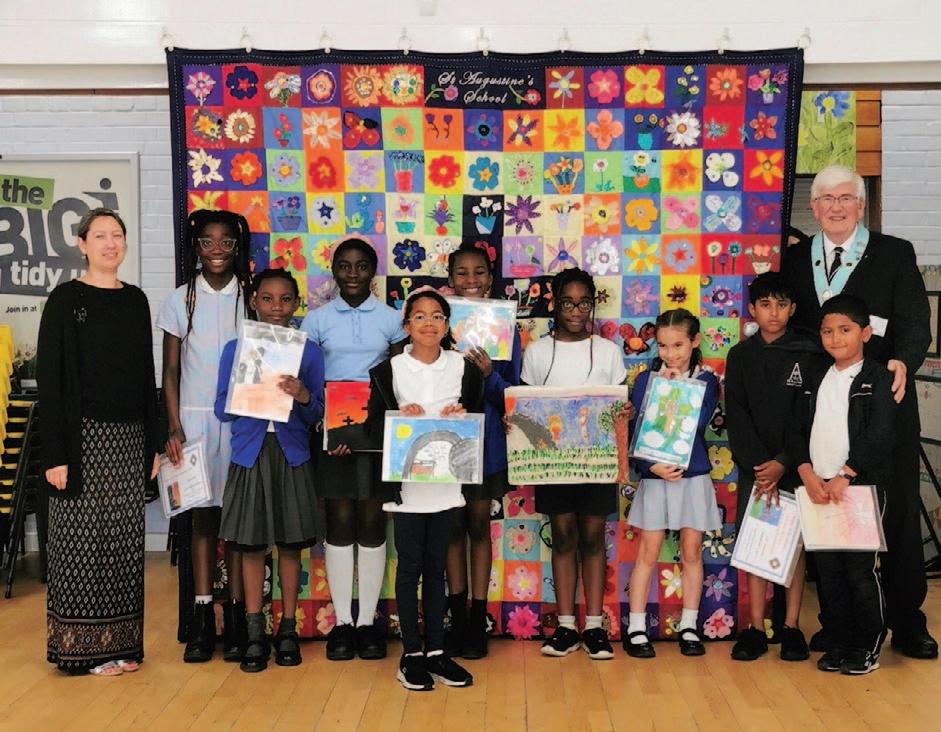
The Diocese of East Anglia is seeking a sponsor for its monthly Catholic East Anglia newspaper, which reaches 52 parishes and up to 7,000 readers each edition with the latest news and features about the local Catholic community.
Editor Keith Morris said: “Print and distribution costs associated with the well-read newspaper have been increasing and we now need to find one or two sponsors who would like to appear regularly in the paper to help us subsidise the cost.
“If you are an organisation or business which would like to reach the East Anglia Catholic community, I would be delighted to discuss details with you about how we could promote your work or services, whilst helping us continue to produce the newspaper in both print and online editions.”
If you would like to discuss this opportunity, please email Keith at keith.morris@rcdea.org.uk or ring 07712 787762.
n Cambridge’s Our Lady of The Assumption and English Martyrs church hosted a vibrant community gathering to mark the Feast of The Assumption on August 15, featuring a candlelit procession and Feast Day cake.
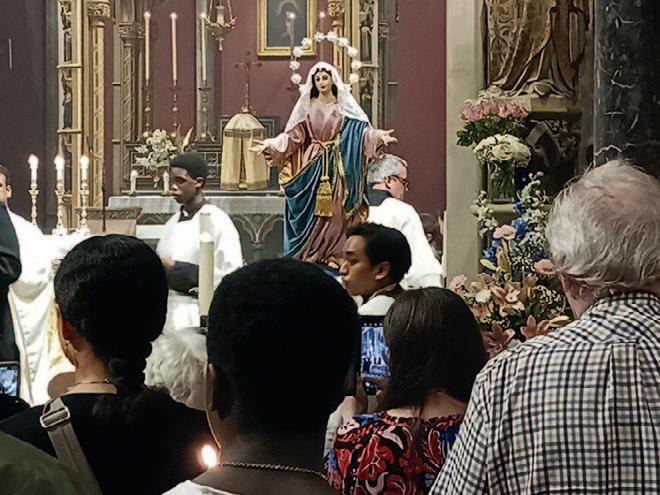
The event was marked by a candlelit procession around the church and into the school playground before returning to the church.
The occasion featured a range of edibles brought by attendees, fostering a sense of community and fellowship among the congregation. Monsignor Harkness highlighted the event by cutting the Feast Day cake. The feast at OLEM was not just an act of religious observance but also a celebration of community, making it a meaningful day for all who participated.
n Parishioners from St Felix’s Church in Haverhill visited the energy recovery facility at Great Blakenham, run by Suez in partnership with Suffolk County Council recently writes the church’s Justice and Peace group.
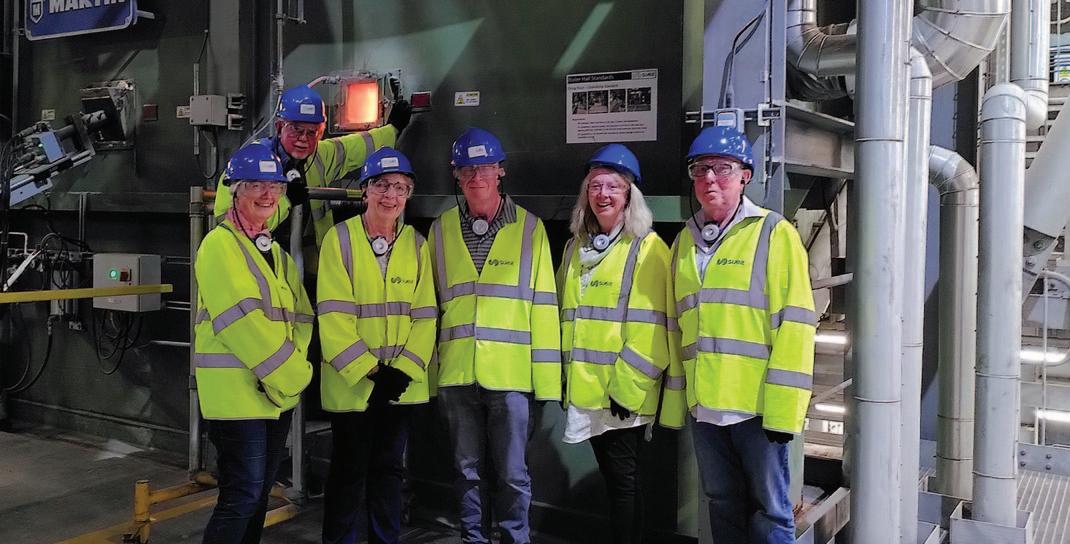
The visit, on July 27, led us to reflect on Pope Francis’s 2015 Encyclical Laudato Si and our relationship with Creation. Today, we produce vast amounts of waste, and disposing of it is a major challenge for our local authorities.
Even if we try to live simply – for example, by reducing what we buy, refusing to use plastic bags, and aiming to recycle as much as we can – there are still some items that can only be disposed of through black bins.
To find out what happens to Suffolk’s black bin waste, we visited the energy-from-waste facility near Great Blakenham, which uses
waste as fuel to generate electricity.
Our visit began with a presentation and discussion about Suffolk County Council’s waste and recycling policies. The most environmentally friendly way to dispose of rubbish is by reusing or recycling it, but some materials, such as soft plastics, can’t be disposed of in these ways. Waste from Suffolk that cannot be reused or recycled is brought to the facility for burning at temperatures over 1,000 degrees centigrade. The heat released is used to convert water into superheated steam. Under high pressure, this steam drives a turbine to generate electricity. The plant exports around 20 megawatts of electricity to the National Grid – enough to power 40,000 homes.
Afterwards, we donned protective clothing for a tour of the site.
n The Latin Mass Society 2023 Walsingham Pilgrimage ended on August 28 with a Sung Mass in the Slipper Chapel offered for the intentions of Bishop Peter Collins of East Anglia, who gave his blessing for the pilgrimage.
This year’s pilgrimage (pictured below courtesy of the LMS) saw a record number of participants – with over 200 people registered for the full three-day walking pilgrimage, and more than 400 people attending the High Mass celebrated at Walsingham on the Sunday. A subgroup of pilgrims started the Pilgrimage on Thursday morning, departing from Cambridge for Ely. They met the other pilgrims on Thursday evening in Ely.
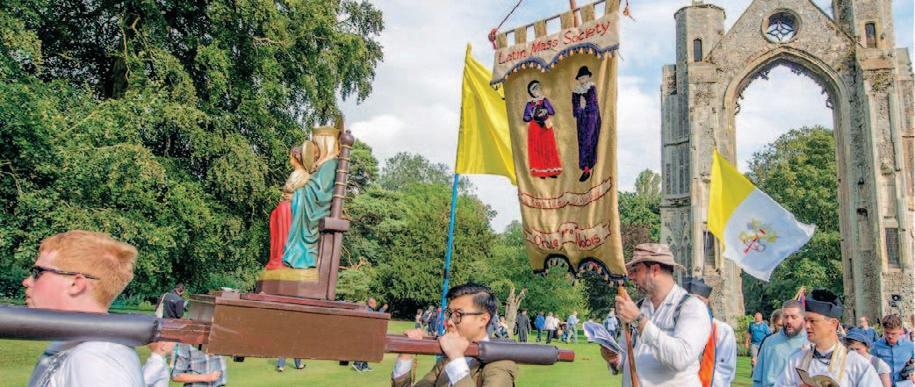
On Friday morning, a 5.45am wake up started the pilgrims’ day of walking from Ely to Stoke Ferry. Mass was celebrated at St Etheldreda’s, Ely. On Saturday, pilgrims walked from Stoke Ferry to Great Massingham. Mass was offered for LMS benefactors at Our Lady of Pity, Swaffham.
On Sunday, pilgrims arrived in Walsingham. A coach from London brought additional day pilgrims to Walsingham, and more pilgrims made their own way to Walsingham for the day. High Mass of Our Lady was offered for the conversion of England at the National Shrine and Basilica of Our Lady of Walsingham, with over 400 people in attendance. A Procession was held to the Priory Ruins – the historic site of the Holy House, which was the principal point of Our Lady’s 1064 vision.
Latin Mass Society – lms.org.uk
n Nick Walmsley has celebrated his 50 years as organist and Musical Director of St Helen’s Church, Hoveton. At a special celebration Mass on August 19, Nick was presented with a figurine depicting J S Bach at the organ. A large congregation gathered after Mass to enjoy refreshments with Nick. Pictured above is Nick with Parish Priest Fr Peter Raj.
